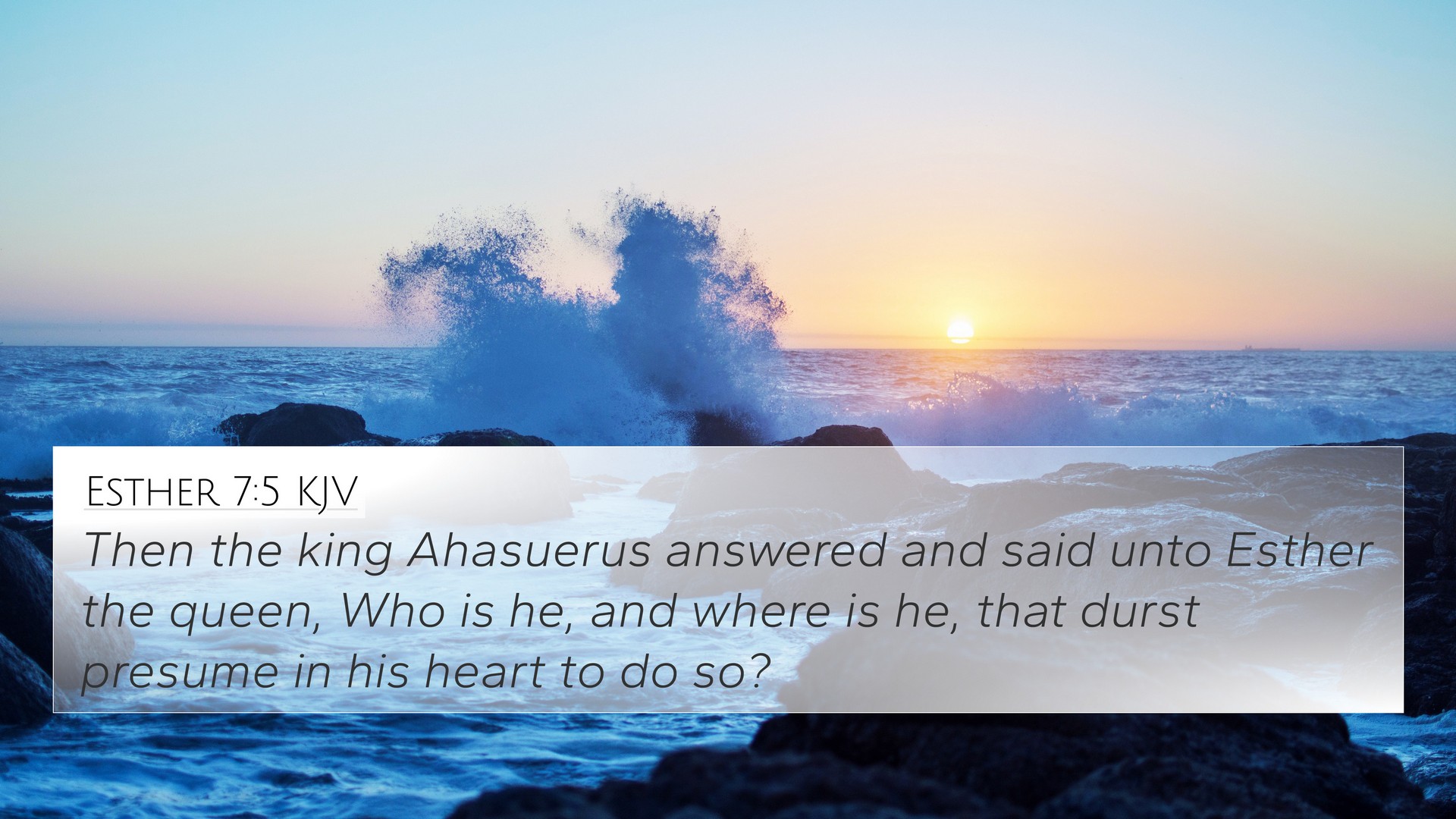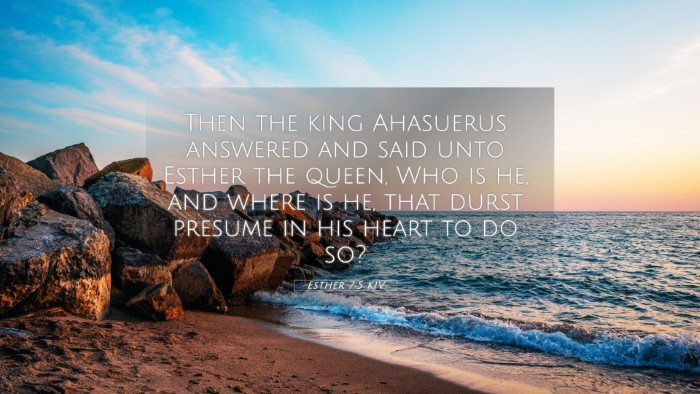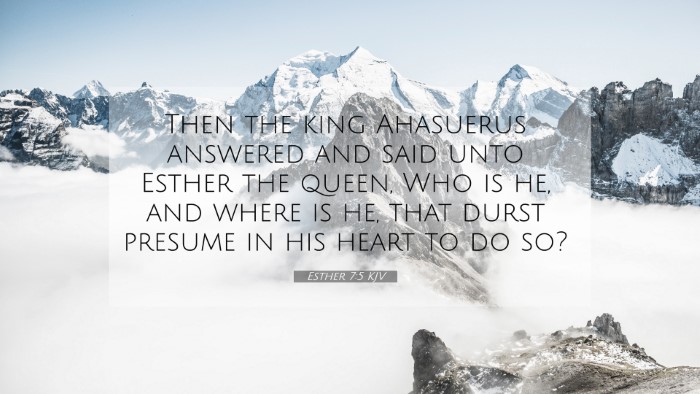Old Testament
Genesis Exodus Leviticus Numbers Deuteronomy Joshua Judges Ruth 1 Samuel 2 Samuel 1 Kings 2 Kings 1 Chronicles 2 Chronicles Ezra Nehemiah Esther Job Psalms Proverbs Ecclesiastes Song of Solomon Isaiah Jeremiah Lamentations Ezekiel Daniel Hosea Joel Amos Obadiah Jonah Micah Nahum Habakkuk Zephaniah Haggai Zechariah MalachiEsther 7:5 Similar Verses
Esther 7:5 Cross References
Then the king Ahasuerus answered and said unto Esther the queen, Who is he, and where is he, that durst presume in his heart to do so?
Uncover the Rich Themes and Topics of This Bible Verse
Listed below are the Bible themes associated with Esther 7:5. We invite you to explore each theme to gain deeper insights into the Scriptures.
Esther 7:5 Cross Reference Verses
This section features a detailed cross-reference designed to enrich your understanding of the Scriptures. Below, you will find carefully selected verses that echo the themes and teachings related to Esther 7:5 KJV. Click on any image to explore detailed analyses of related Bible verses and uncover deeper theological insights.
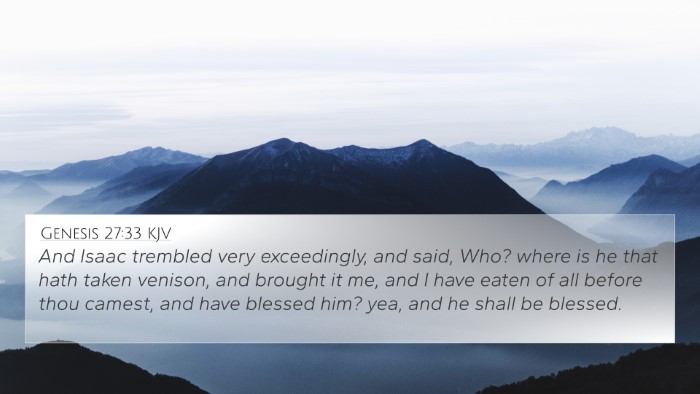
Genesis 27:33 (KJV) »
And Isaac trembled very exceedingly, and said, Who? where is he that hath taken venison, and brought it me, and I have eaten of all before thou camest, and have blessed him? yea, and he shall be blessed.
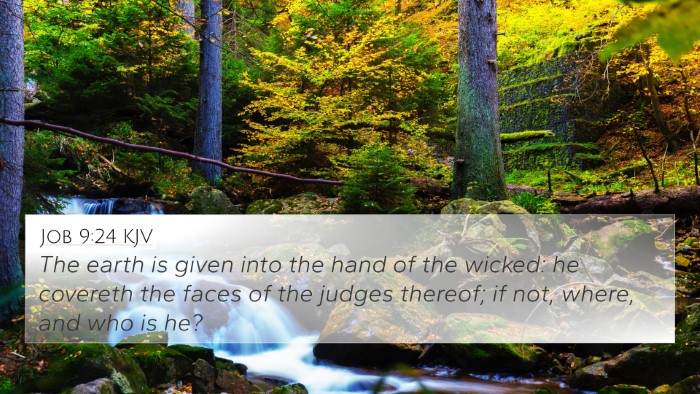
Job 9:24 (KJV) »
The earth is given into the hand of the wicked: he covereth the faces of the judges thereof; if not, where, and who is he?
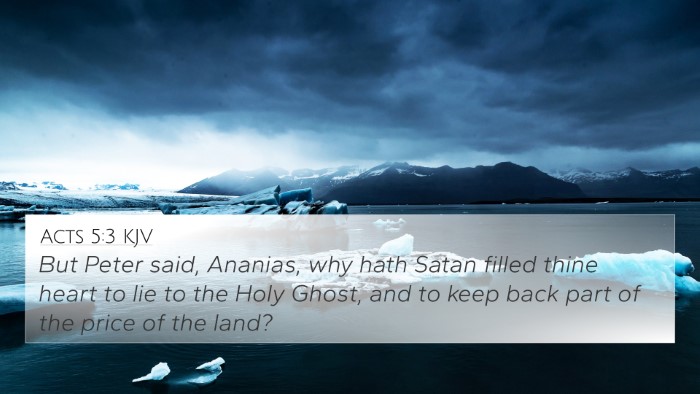
Acts 5:3 (KJV) »
But Peter said, Ananias, why hath Satan filled thine heart to lie to the Holy Ghost, and to keep back part of the price of the land?
Esther 7:5 Verse Analysis and Similar Verses
Understanding Esther 7:5
In Esther 7:5, we witness a pivotal moment in the story of Esther, where King Ahasuerus confronts Haman about his malicious plot against the Jews. This verse acts as a critical turning point, revealing Haman's deceit and setting the stage for the subsequent downfall of this antagonist.
Verse Context
This verse is situated within a broader narrative of tension and conflict. Esther, having bravely approached the king, invites him and Haman to a banquet, which serves as a backdrop for her ultimate revelation of Haman’s intentions. The king’s inquiry in this verse underscores the dramatic irony and the roles of power and guilt.
Key Themes:- Justice: The verse emphasizes the theme of divine justice, as Haman's treachery is brought to light.
- Bravery: Esther's courage in addressing the king highlights the importance of standing up for one's people.
- Consequences: Haman's actions lead to dire consequences, illustrating the biblical principle of sowing and reaping.
Commentary Insights
Matthew Henry: Henry emphasizes that the king’s inquiry reveals God’s providence at work, turning the tables against the wicked. The question posed by the king serves as a moment of revelation, amplifying the tension as Haman realizes his fate.
Albert Barnes: Barnes highlights the psychological aspect of Haman's despair as the reality of his situation dawns on him. The king's role as a judge in this instance reflects the moral order established by God.
Adam Clarke: Clarke discusses the implications of the king’s question and notes its significant role in the unfolding drama. He points out how Haman’s arrogance leads to his unraveling, as the king’s response is steeped in righteous anger against the plots against his queen’s kin.
Cross-References
Thematic connections can be drawn from several related scripture passages:
- Esther 3:8-9: Haman's decree to destroy the Jews.
- Esther 8:1-2: The king’s favor towards Esther and the turning of fortune.
- Psalms 37:12-15: The fate of the wicked.
- Proverbs 28:10: The consequences of leading others into evil.
- Jeremiah 51:24: God's promise to repay Babylon for their evil.
- Galatians 6:7: Reaping what one sows, highlighting moral consequences.
- Romans 12:19: Vengeance belongs to the Lord, who brings justice.
Thematic Connections
Connections between Bible verses deepen our understanding of themes such as divine retribution, the power of faithful advocacy, and the triumph of good over evil. These cross-references help illustrate:
- The interplay between human decisions and divine sovereignty.
- The importance of standing firm in faith amidst persecution.
- The ultimate justice faced by those who plot evil against the righteous.
Using Cross-References Effectively
To fully appreciate the connections between Scripture, consider utilizing tools for Bible cross-referencing. A highlights include:
- Utilizing a Bible concordance to locate thematic verse connections.
- Employing a cross-reference Bible study guide to navigate similar passages.
- Engaging in cross-referencing Bible study methods for deeper insight.
Conclusion
Esther 7:5 encapsulates the critical moment of revelation that leads to Haman’s demise, both exemplifying the deliverance of God’s people and the consequences of evil actions. It's a powerful reminder of the themes of justice, courage, and divine intervention. These reflections highlight the rich tapestry of biblical narratives, underscoring the importance of cross-referencing verses to interpret Scripture dynamically and meaningfully.
